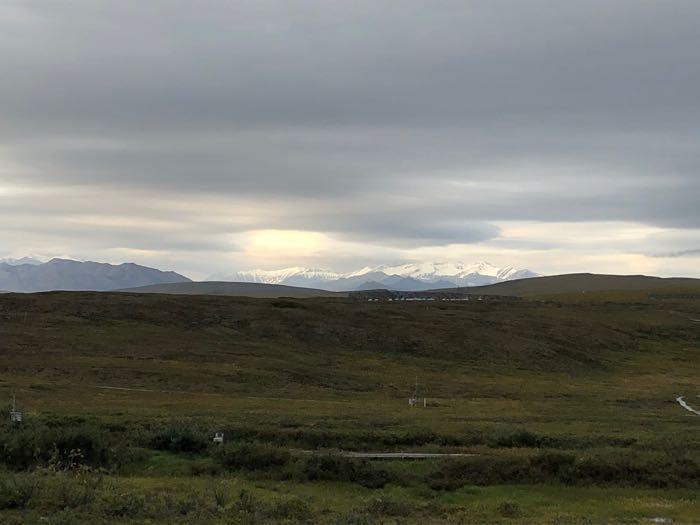 Sun's rays hit the Brooks Range early in the morning
Sun's rays hit the Brooks Range early in the morning
Weather and climate are easy terms to get confused. Both describe atmospheric conditions that affect our lives. Climate, however, describes average conditions in the atmosphere of a region over a long period of time. Weather describes atmospheric conditions of a region over a short period of time. It's been raining on and off for the past few days. Some scientists in camp who have been coming to Toolik every summer for decades remember the snow falling around the first week in August. It has yet to snow this month. If we review average snow levels at Toolik for this month, we would likely see that the snow levels have been dropping in recent years. This is another foreboding sign for change occurring to the Arctic climate.
The Arctic is an important region of the world that scientists are keen to watch. It helps regulate the Earth's sea temperatures, weather patterns, sea currents, and global temperatures. Arctic sea temperature drive ocean currents which affect climates of other regions across the world. The ice on the poles helps to reflect radiation from the sun back into space, which helps to keep atmospheric temperatures lower. The Arctic is also a habitat for many key species which support complex food webs that economies across the globe rely on.
As my time in Toolik comes to a close, I've started to reflect on how the climate in the Arctic will drastically change. I worry that the landscape, including the flora and fauna that I've become familiar with, will be significantly altered if not vanished if I return in another few years. I am optimistic that we will begin to implement policy changes that will help curb climate change. However, substantial changes to the environment will still occur because of our delay. So as I begin to pack my thoughts fall to how grateful I am for this experience because I know that I am witnessing the end of one landscape and the beginning of another.


Add new comment